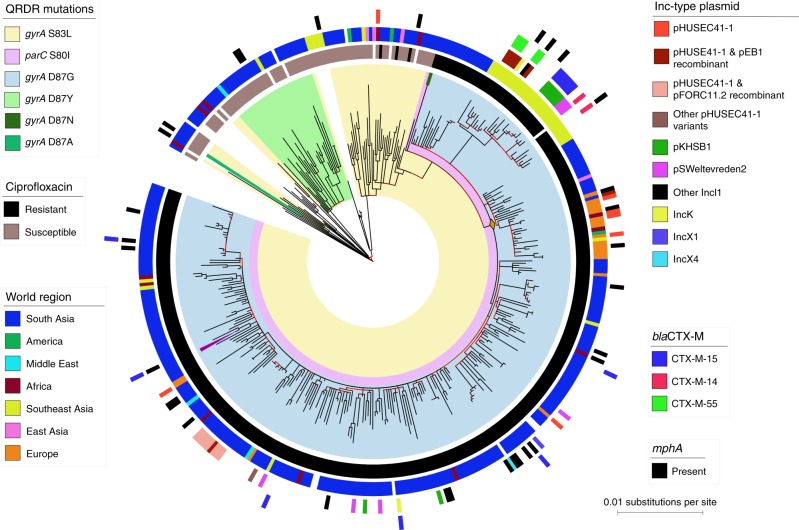Fig. 1.
The phylogenetic structure of CenAsiaIII Shigella sonnei. The figure displays the maximum likelihood phylogeny of 395 S. sonnei sequences belonging to the CenAsiaIII clade. The tree is rooted on the most closely related sequence from the S. sonnei global sequencing study. The branch colour scheme indicates bootstrap support for the corresponding branch, ranging from low to high (red to black). The shading covered on the phylogeny indicates taxa harbouring quinolone resistance determining region (QRDR) mutations (see key). The orange diamond indicates the internal node leading to the major fluoroquinolone-resistant (FQr) clone. The magenta triangle denotes the position of taxon 2012–02037, which was subjected to long-read sequencing (see Methods). The rings show the associated information for each taxon, from the innermost to the outermost in the following order: (1) susceptibility testing for ciprofloxacin (black: resistance; brown: susceptible); (2) original geographical source; (3) presence of different plasmids; (4) presence of ESBL blaCTX-M genes; (5) presence of mphA. The horizontal scale bar indicates the number of nucleotide substitutions per site

